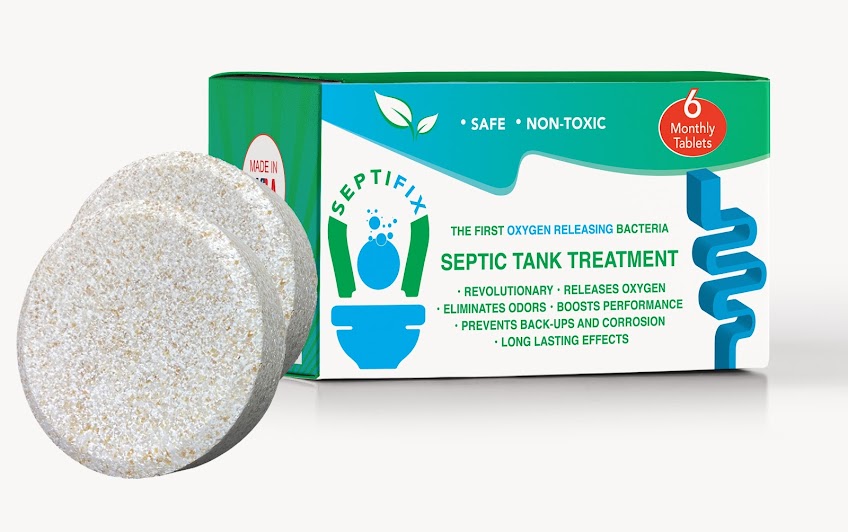Difference Between A Septic System and Sewer System
Most people don’t put a lot of thought into their home’s waste disposal system. But if you are considering purchasing a new home one of the questions that you might have is- what is the difference between a septic system and a sewer system? If you want to know the difference between a septic system and cesspool read this.
So, what is the difference between a septic system and a sewer system? A public sewer system is a public utility that is owned and maintained by the local municipality, homeowners pay a monthly fee to use the sewer system but don’t have to worry about the upkeep. Whereas, a septic system is a private waste disposal system that is hosted on the property of the home. It is the responsibility of the homeowner to maintain and service this a septic system, but usually, the cost is cheaper in the long run.
In the rest of this article, we will take a deeper look at how a septic system differs from a sewer system and how those differences impact your day to day life.
Where Does the Waste Go in a Septic System as compared to a Sewer System?
The next big difference between septic system and public sewer systems is with where does the waste actually go when it leaves your home.
With a Public Sewer System, the household waste leaves your home through the main sewer pipe that is connected to the main sewer lines in the street. The household waste is carried away from the home to the city treatment plant. So as you can imagine with a public sewer system, the waste isn’t housed or held on the property.
This is a major difference compared to a how a septic system disposes of waste.
With a Septic System, once household waste leaves your home via it enters a Septic tank which collects and holds the waste. The Septic tank is contained on the property, underground. As you can see this is very different from a sewer system. With a septic system, the waste and waste treatment all happens on your property.
How is Waste Treated/Processed Differently in a Septic System compared to a Public Sewer System?
Now that you understand the differences between septic systems and sewer systems when it comes to housing the household waste, let’s take a look at how they both go about treating the waste.
Waste in a Public Sewer System is carried away to a waste treatment plant where it is cleaned for reuse. The process by which the plant actually uses to treat the water will vary depending on the type of plant.
Waste treatment plants can have up to 3 phases of treatment depending on how the plant is designed and how sophisticated it is.
- Phase One – is called Primary Treatment. It involves a screen and series of pools and ponds that allow the solids to settle and scum to rise to the top. It will usually take out about 50% of solids and bacteria from the water. If the plant is designed with a single phase, at the end of the Primary Treatment, the water will be chlorinated to kill the remainder of the bacteria. Where the solids are collected for removal to a landfill or incineration.
- Phase Two- is called Secondary Treatment. If your waste treatment plant has a secondary treatment phase then in this stage, the wastewater moves to large aerated holding tanks where bacteria will remove up to 90 percent of the remaining solids.
- Third Phase – or Tertiary Treatment. Can vary from plant to plant. But typically chemicals are added to wastewater to remove phosphorus and nitrogen, and the water is chlorinated to remove any remaining bacteria. Sometimes there are filter beds and other types of treatment before the water is discharged through this third stage of treatment.
How does this differ from how wastewater is treated in a septic system?
Wastewater in a septic system is treated right on the property. A septic system uses natural bacteria in the system to help process and treat the wastewater before it is discharged into the drainage area, which is another part of your septic system.
The Septic Tank is connected the drain field via a series of pipes. The drain field needs to be free from solids to avoid clogging and accept the wastewater freely from the septic tank.
Septic systems can use two different types of processing bacteria to treat the wastewater, aerobic and anaerobic. The difference is that anaerobic septic systems rely on bacteria that don’t need oxygen to process the wastewater in the tank. Whereas, aerobic septic systems have bacteria that require oxygen to process the waste.
You could have either an aerobic or anaerobic system septic system on your property. The easiest way to figure this out is to see if you have an air compressor in your system. This would be the pump that is literally pumping oxygen into your septic tank.
Regardless of what type of septic system you have, the wastewater is being treated by bacteria in the septic tank before it is dispelled into the drainage field.
How Do I Know If I Have a Septic System or Sewer System?
There are a few ways that you can tell if you have a septic system or sewer in your home. Here are few signs to look for.
- Where is your home located? – This one isn’t always the case but generally, if your home is located in a city it will have a public sewer system. Whereas, if your home is located in a more rural area then it could have a septic system if connecting homes to a public sewer aren’t feasible due to the distance.
- Do you pay sewer taxes? If your home is connected to a public sewer then you should be paying monthly sewer fees to the public utility.
- Do you have septic lids on your property? This would be entry locations to your septic tank.
- Do you see inspection pipes in your yard which are usually installed above the leach field?
- Call the local town and see if your home is zoned for public sewer or septic.
How do maintenance requirements differ for Sewer Systems compared to Septic Systems?
If you have public sewer you really have no maintenance when it comes to your sewer system. Your main job is to make sure the plumbing in your home is working properly. But the sewer is taken care of by the city starting at a certain number of feet from your home.
If you have a septic system, the maintenance of your system is your responsibility and very important to keep your system working correctly. You will need to get your septic tank pumped on regular intervals to make sure you keep solids from going into the drainage field and clogging the system. Read our article on warning signs of a full septic tank for more information. If you need local pumping services to go to our directory.
If you have a septic system with electronic components like an aerator then you will need to service or repair pumps at times. Usually, a septic tank needs to be pumped every 2-3 years depending on usage.
Conclusion Septic System & Sewer Sytems Pros and Cons
In the end, both systems are widely used methods of waste disposal. So let’s sum up some of the pros and cons of each of these two systems if you are trying to decide which is best for your lifestyle.
Sewer System Pros
- No Maintenance
- Don’t have to worry about using products like bleach (Read our article on Bleach in Septic System)
- Don’t house waste on the property
Sewer System Cons
- Not feasible in Rural areas
- Monthly fees/taxes
Septic System Pros
- Can be used in rural areas
- Self-Contained on property
Septic System Cons
- More Maintenance
- Have to watch the use of certain materials (Like Bleach)
- Can be costly to replace and repair
You shouldn’t shy away from purchasing a home with a septic system, just understand what you are getting into, and make sure you get the septic system inspected before purchasing.
Read our article on purchasing or selling a home with a failed septic system.
If you need to get your septic system serviced find a local professional in our state by state directory. Simply click your state below.
[us_map]









